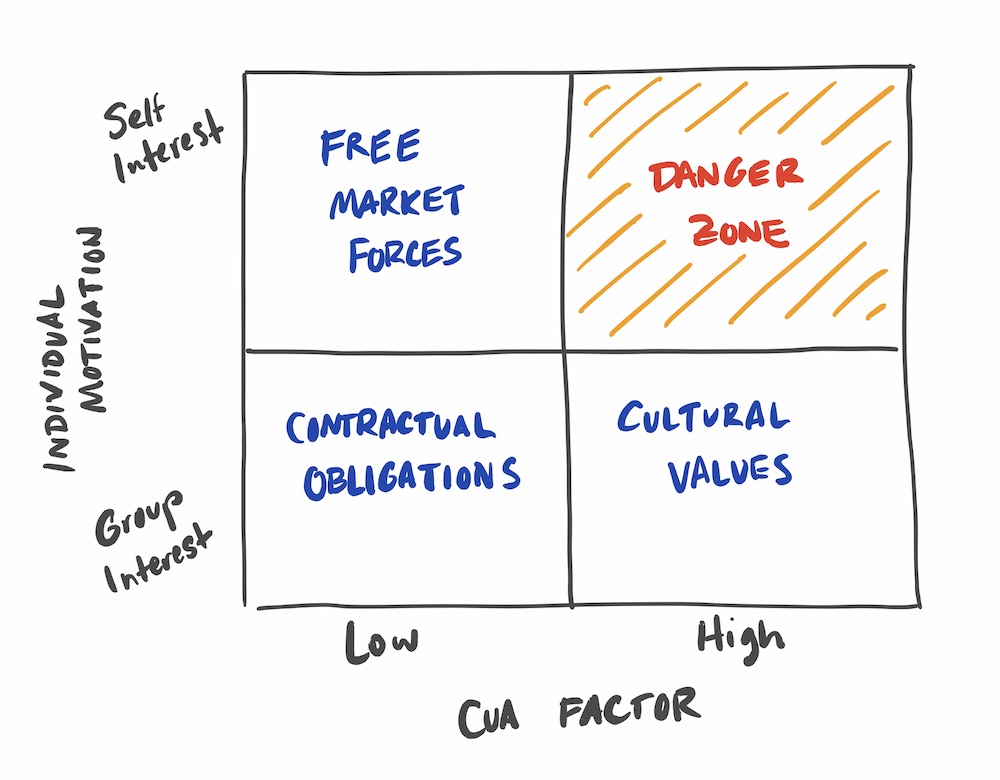Modes of Control
March 21, 2019 • #I’ve nearly finished reading Andy Grove’s High Output Management. Grove was the one of the founders and CEO of Intel, especially famous for his leadership of the company’s shift from design and fabrication of memory to microprocessors in the 80s.
The book is mostly well known for documenting Grove’s management style, which was later formalized into the OKR framework now widely used by Google and others.
But one of my favorite bits from the book (and there are several) is his concept of “modes of control.”
The fundamental idea is that there are different models in which actions can be controlled or influenced on two dimensions: where the motivations lie and the complexity of the environment (which he terms complexity, uncertainty, and ambiguity, the “CUA factor”).

The axes run across these two spectra:
- Group Interest → Self Interest
- Low CUA → High CUA
Then there are the “modes” themselves. Grove emphasizes the importance of selecting the appropriate mode of control for the position of the relationship or environment, with three fundamental modes:
- Free market forces — Purchasing new tires, you select the lowest price and highest quality for your personal need. High self interest, low ambiguity.
- Contractual obligations — Traffic signals and stop signs. There’s a high group interest in all of us obeying the rules, and low ambiguity about how to do so.
- Cultural values — Getting promoted or hired into a leadership role in a company. Group interest must be satisfied for the company success, but ambiguity can be very high as to how to know what to focus on. Strong cultural values in an organization help guide leaders to the right decisions.
Each combination of motivation and ambiguity creates a unique environment with an optimum mode. In thinking about this in context of my own work, I can easily map past hardships and bad business relationships to a mismatch in environment/mode. In the workplace as managers, what we most often don’t respect enough is the nature of the CUA factor with a given job, project, or task. This mental framework for thinking about relationships is helpful for selecting the appropriate communication or management mode.
When self interest and ambiguity both spike up, you get chaos. The “everyone for themselves” panic on a sinking ship.